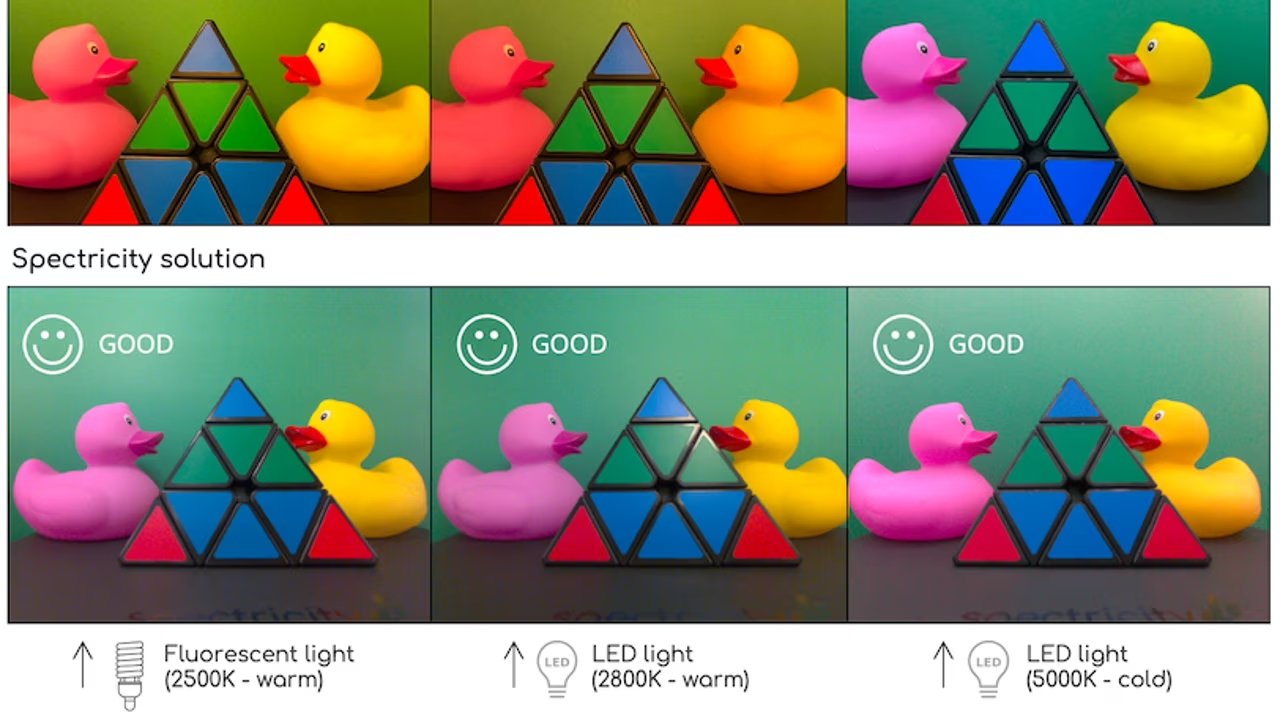CES is an excellent place if you’re looking for innovative startups. And, as the final day of CES unfolds, anticipation for a celebratory beverage at an afterparty is palpable.
But before you immerse yourself in the revelry of the afterparties, take a moment to explore just a few European startups exhibiting at CES — you’ll want to track them down:
Spectricity (Belgium)
Have you ever noticed that colours in photos differ across different mobile phones?
In response, Spectricity has developed the “S1” multispectral camera, which provides the information necessary for accurate colour reproduction. It measures the spectrum of light at 16 wavelengths in every camera pixel.
This results in a better white point assessment, which in turn delivers true consistent colours.
The camera can also assess colours more accurately than the naked eye giving an accurate colour representation of everything from paint to skin tone with far-reaching applications from healthcare to skin colour matching in cosmetics.
Even better, this camera can be in any smartphone within two years
Opteran (UK)
My interest is piqued when a company mentions insect brains and AI in the same brief.
Opteran harnesses insect intelligence as a unique alternative to AI and SLAM. Research into insect brains has demonstrated how insects such as ants and honeybees, with only 250,000 and 1 million neurons in their brains respectively, have evolved their behaviour to complete complex navigation tasks consuming micro-watts of power.
In response, the company uses biology and neuroscience to reverse engineer algorithms that evolved over billions of years in insect brains. It provides a practical working solution for machine vision, navigation, collision avoidance and decision-making.
Opteran’s edge-only software uses low-cost cameras and silicon, making it the ideal solution for a wide range of applications, including autonomous robots, autonomous driving and drones; in logistics, construction, and mining industries.
Turin Tech (UK)
TurinTech AI has developed Artemis AI, a state-of-the-art automated code optimisation platform that has enormous benefits for the speed of software development and its carbon emissions.
Artemis AI can optimise code bases in a matter of minutes, resulting in more efficient software. As energy consumption directly correlates with software efficiency, implementing Artemis AI can lead to significant energy savings.
LightCode Photonics (Estonia)

Service robots help to solve the increasing labour shortage and high operating costs in various industries, including warehouses, shops, hospitals, etc.
However, their operational efficiency, speed, and safety need improvement. Existing 3D solutions have either the required performance or scalability, but not both.
In response, LightCode Photonics is building the world’s first Software-Defined 3D Camera. It embeds sensors with software-defined capability and provides Lidar performance using accessible commercial off-the-shelf components at an affordable cost.
Its tech can be used to elevate the capabilities of service robots.
Specifically, LightCode has created a high-resolution 3D vision and sensing technology that captures a 1,536-pixel image with a 12-pixel sensor, making a $15 sensor behave like a $1,000 sensor.
Certivity (Germany)
Keeping products on the up and up and on track and on time and budget and meeting strict government and industry guidelines can be quite challenging.
Certivity connects the non-digital regulatory world to digital engineering processes, simplifying product compliance for all stakeholders.
Its platform digitises regulatory documents, transforms them into regulatory data, analyses them with AI to find requirements, and connects to engineering processes.
Certivity leverages the latest LLM advances with domain-specific training for information extraction from regulatory data.
This enables customers to streamline their compliance processes, reduce costs and accelerate time-to-market for their products while opening up new ways of collaboration to ensure that compliance and engineering teams work seamlessly together.
Inveo (France)

Image: Inveo's BatCave Connect.
Global warming is a critical challenge for bats. Bats are more vulnerable than other mammals of the same size, as water evaporation is exceptionally high due to the large surface area of their wings.
Rising temperatures leave bats less time to hibernate. This makes it harder for them to recover their energy.
30,000 died during the 19 episodes of extreme temperatures in Australia, including a mammoth 23,000 over a two-day heat wave. This situation is exacerbated in warm climate regions with extreme temperatures, such as Southern Europe.
In response, Inveo has launched BatCave Connect, the first thermally insulated and connected house for bats. Made from ultra-light, insulating materials, it features sensors and an application to monitor the health of bats in their new home.
Lead image: Spectricity.



Would you like to write the first comment?
Login to post comments